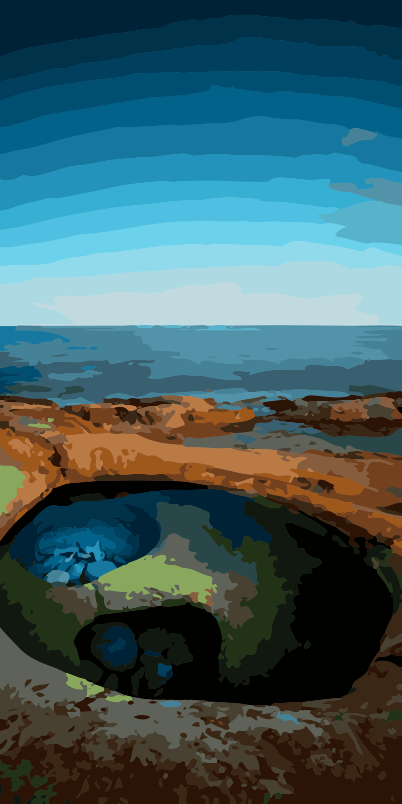Hack.VR: A Programming Game in Virtual Reality
Dominic Kao, Christos Mousas, Alejandra Magana, D. Fox Harrell, Rabindra Ratan, Edward Melcer, Bret Sherrick, Paul Parsons and Dmitri Gusev
In this article we describe Hack.VR, an object-oriented programming game in virtual reality. Hack.VR uses a VR programming language in which nodes represent functions and node connections represent data flow. Using this programming framework, players reprogram VR objects such as elevators, robots, and switches. Hack.VR has been designed to be highly interactable both physically and semantically.
SuSketch: Surrogate Models of Gameplay as a Design Assistant
Panagiotis Migkotzidis and Antonios Liapis
This paper presents a design tool for first person shooter levels, which leverages machine learning to provide the designer with predictions of the gameplay for two competing players of specific classes. The interface allows the designer to work side-by-side with an artificially intelligent creator and to receive varied types of feedback such as path information, predicted balance between players in a complete playthrough, or a predicted heatmap of the locations of player deaths. The system also proactively designs alternatives to the level and class pairing, and presents them to the designer as suggestions that improve the predicted balance of the game. The tool offers a new way of integrating machine learning into mixed-initiative co-creation tools, as a surrogate of human play trained on a large corpus of artificial playtraces.
Echo Hunt: a Case Study in Player Interaction in Virtual Reality vs. 2D Screen
Xinyun Chen, Chengcheng Ding and Ray Lc
Virtual Reality (VR) is a platform that brings not only new ways of viewing media but new input interaction methods that go beyond simply analogs for 2D experiences. How do game mechanics in VR capture the interactions in a 2D screen-based equivalent, and what do they do fundamentally different? To study this topic, we created a game called ``Echo Hunt'' that first focused on creating the experience of being a bat in a world without any light sources. The idea is to let players learn how to assimilate into a new type of interaction so that in both VR and 2D interfaces, they are dealing with novel concepts. We built a non-VR and a VR version of the game without changing the mechanics or scenes in the game. Upon further development, we focused on the following issues: how similar game mechanics may need to be implemented differently in VR, how the experiences are different between the VR and non-VR version as a result and what can be done to make the experience even more immersive in VR.
Remote Multi-Player Synchronization using the Labstreaming Layer System
Marios Fanourakis, Phil Lopes and Guillaume Chanel
We present an open-source collection of modules and plugins that can be used to perform synchronous data collection from multi-player games. In its current state, the system can acquire players behaviors (facial expressions, eye-movements, posture, and mouse/keyboard events), physiological reactions (electrodermal activity, heart rate, etc.) together with events indicating the game state. Two games are supported: "Xonotic", and "Counterstrike: Global Offensive" but the system can be easily extended to other games. The different data streams are recorded and sychronized through the use of the Labstreaming Layer (LSL) system. We demonstrate the successful synchronization of physiological responses, eye-movements, and a camera to within 42ms.
Wrath of Osiris: Surviving Boredom and Collapsing Pyramids in Times of Isolation
Ashwin Sitaram, Jelle Römer, Jurriën Teunisz, Marnix Massar, Niels Mook, Marie Kegeleers and Rafael Bidarra
When people need to stay quarantined at home for long periods of time, loneliness, lack of exercise and boredom tend to affect them more frequently and strongly. Games combining physical exercise, challenging gameplay and social cooperation can combat these negative phenomena. This paper describes one such game: "Wrath of Osiris". In Wrath of Osiris, actual player movement in the real world is used as an input method, in order to get some exercise; the players need to work together, to promote feelings of camaraderie and team spirit; and the issue of boredom is tackled by an increasingly challenging game setting. Commonly available technology, such as image processing via a webcam and networking are used to offer a solution to a wide range of people.
Dismental: a game for social engagement in pandemic times
Gees Brouwer, Pepijn Klop, Onno Gieling, Jonas Duifs, Jeroen Janssen, Kevin Van der Werf, Marie Kegeleers, Jan Willem David Alderliesten and Rafael Bidarra
The year 2020 started with a corona-virus outbreak. As a result, many people are no longer allowed to leave their home, which leads to a heavy reduction in social contact. At the same time, everyone wants entertainment at home so many people are playing games.
Dismental is a social game explicitly designed and developed for this context. The game aims at creating a fun experience and conviviality by requiring players to communicate and work together to complete a number of mini games to diffuse a bomb. Dismental consists of two types of mini-games, for 2 up to 8 players: the first type involves two active players, and requires skillful communication, coordination and keeping your head cool; the second type involves all players and is aimed at fast reactions and chaotic situations. Completing a series of mini-games within a set time limit will successfully defuse the bomb.
All players use a variety of gestures captured by their webcam to interact with the mini-games.
The game was created with the Godot game engine, which has all development tools that are needed to build our 2D game.
